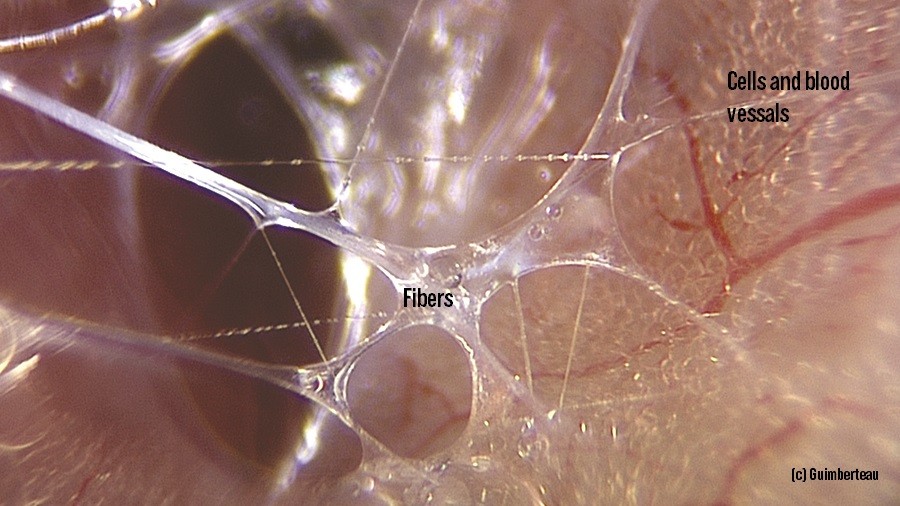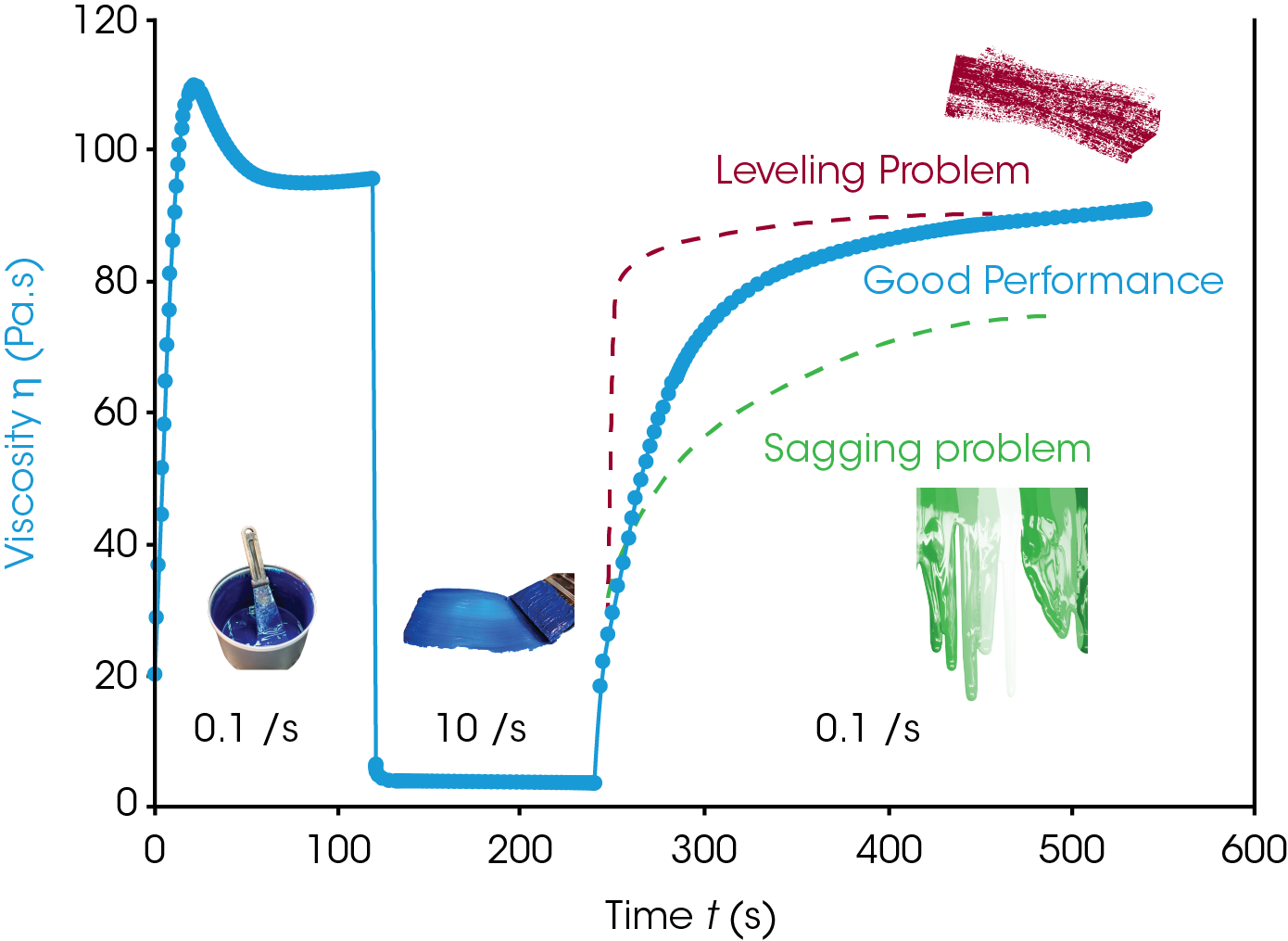Fortifying the Fascia: Thixotropic Training Explained
Dive into the wizardry of fascia fortification as we unravel the mysteries of thixotropy in massage therapy and exercise science. This article takes a playful jab at the sometimes mystical-sounding claims, and provides a grounded, scientific exploration of the role of fascia and innovative training methods that may or may not make your slimy body fluids resemble your favorite childhood slime toy.
WN
By Workout Notepad
April 13, 2024

Thixotropy: The Slime Superpower in Our Bodies?

Thixotropic fluid in action
Within the serpentine channels of our biology thrives a quirky wizardry known as thixotropy, a phenomenon where our very tissues transition from lethargic gel to lithe liquid with the mere wave of a wand—or, more accurately, a whisk of movement. It’s akin to stirring a pot of honey; dormant at first glance, yet with a little agitation, it surrenders to fluidity. Spellbound by this concept, massage therapists across the globe rub their hands in glee; for what could this suggest about kneading and coaxing our fleshy fabric into unearthing its supple secrets? This veritable alchemy summoning the body’s internal ebb and flow also ushers us gently into the vault of fascination surrounding fascial tissue, hinting at how the ripples of a massage may cascade through the fascia, strengthening its resilience. Be it the slow, deliberate pressures that invite a gel-to-liquid transformation—promising to both fortify and liberate—it’s clear that thixotropy whispers a tantalizing tale in the realm of rehabilitative therapy and physical rejuvenation.
The mesmerizing dance of thixotropy within our innards perhaps lays a slippery foundation for deeper anatomical adventures, cueing us to pivot toward the structural highways known as fascia. These biological skeins weave a continuous tapestry of connectivity inside us, and any conversation about bodily suppleness invariably intersects with their story. As we transition to examining these winding wonderments, one can’t help but consider findings presented at the trailblazing 2007’s Fascia Research Congress, where luminaries in bodywork and science convened to unravel the mysteries entwined in this tissue. By understanding how our bodies literally stir themselves to healthful states, curiosity burgeons: can witnessing fascia’s wonders under the lens of thixotropy illuminate an untapped potential nestled in our frame’s fibrous corridors?
The Fascinating World of Fascia
Just as the folklore of old unraveled tales of mystery and magic, the anatomy of fascia weaves a wondrous narrative throughout our own bodies. This enigmatic tissue, more than just a biological afterthought, is a continuous symphony of connective fibers, orchestrating a seamless communication among every muscle, bone, organ, and sinew. Remarkable revelations about fascia came to light during the inaugural 2007 Fascia Research Congress, where scientists and health professionals from all over convened to share their discoveries. They unearthed the dynamic nature of fascia, a living lattice that adapts, supports, and interplays with the human body—its roles reaching far beyond mere physical support to influentially caper with our blood supply, nerves, and emotions.
Unveiling the ‘personality’ of fascia, experts at the congress showcased how this intricate network of tissues could tighten from inflammation or trauma, encouraging a descent into ailment and pain—with afflictions like myofascial pain syndrome and plantar fasciitis headlining the sectarian impact of a constrained fascial frontier. Their research illuminated how its well-being is pivotal to our holistic health, contributing to emotional balance and recovery. The congress became a canvas for illustrating the systemic importance of fascia, weaving between improved surgical approaches and highlighting its subtle dance with our immune response and chronic conditions. It told of a tissue not static but startlingly alive, a character in our body’s story that moves, feels, and responds—a three-dimensional continuum enabling the unity of form and function.
Massage Myths: Debunking the Thixotropic Tall Tale
The mirthful belief that massage therapists can simply knead away stiffness with their healing hands through a thixotropic transformation of the connective tissue is a slippery slope that skids far from actual science. As tempting as it may be to imagine our bodily tissues behaving like some kind of stress-responsive slime – becoming more fluid under the forceful persuasion of a massage – the scientific reality is less fantastic and more robust. Paul Ingraham, a science writer with hands-on experience as a former Registered Massage Therapist, brings to light the misconception that massage therapy exerts its benefits primarily through thixotropy. Instead of considering fascial sheets as malleable membranes that can be thinned out with a proper pummeling, we should understand that these connective tissues are remarkably resilient. The metaphorical melting of fascia under human touch seems to massage the ego more than the muscle, and science doesn’t rub the same way. The truth is, thixotropy within our systems is a minor and temporary event, lagging in its ability to produce the touted therapeutic effects. Thixotropy of the body’s fascial surroundings might occur at a snail’s pace and to a lesser extent than one might hope; to base an entire healing philosophy around this sole property is to stretch an ill-understood concept beyond its elastic limit.
Squashing Squishy Science: How We Really Measure Fascial Change
As our science-crossed story unfolds, the case of tracking fascial change poises itself like a strange whodunit, with detectives—er, researchers—brushing off the dust from old anatomical maps in a quest for clues. The fascial system sits cloaked in molecular mystery, and our desire to decode it sends us sniffing like hounds for definitive answers. Scientists are akin to seasoned chefs, trying to discern spaghetti al dente from the overcooked, except in this odd kitchen, the spaghetti is the body’s very own fascia – a slippery riddle that demarcates muscle from sinew is not easily solved. Armed with the tweezers of palpation, the measuring tapes of manual sling tests, and the magnifying glasses of subjective feedback, they pick apart the fascial puzzle piece by juxtaposed piece. Yet, some adventurers have taken these measurements to new technological frontiers, utilizing ultrasound’s echolocation to register fascial whispers, charting the ways in which the neck might command the calf through the wires of connective tissues. It’s the cerebral version of clapping hands and watching the echo pirouette down a canyon—only this canyon is fleshy, and the echo, deeply biological. Amidst historical setbacks and technological tardiness, innovators inch closer to cataloging the cartography of myofascial interconnectivity, albeit with caution flags raised high for further exploration and validation. The recent foray with ultrasound presents a snapshot of hope—an X marks the spot on this treasure map pointing to a promised land where movement in one compass point sends fascial sea waves to another. Yet the X also symbolizes the unknown; there is uncharted territory that only continued research can elucidate within fascia’s depths. This is a dive into the abyss of biology, where even the bravest may feel vertiginous on the precipice of our current comprehension. Such is the draw of science, equal parts beacon and enigma, helping us face the vast ocean by which we all are haunted.
As we pivot from the enigmatic intricacies that lie beneath our very skin, our next installment plunges into the pragmatic world of thixotropic training methods. In ‘Training Methods That Twist: The Rise of Thixotropic Workouts’, we’ll peer through the looking glass to see if the alluring dance of thixotropy can actually bolster the way we bend, stretch, and sprint. Do these training techniques really mold our muscular systems like clay, as promised, or is it a misconception molded by myth? Stay tuned as we sculpt fact from fiction in the next enthralling section.
Training Methods That Twist: The Rise of Thixotropic Workouts

Thixotropic training methods
In the emergent field of thixotropic workouts, the training methods being touted share a common goal: to leverage the thixotropic properties of bodily tissues, thereby enhancing physical performance. These unconventional approaches often involve dynamic movements designed to alter the viscosity of fascial tissues in response to force, akin to how certain fluids thin out under stress. Proponents suggest that such methods can not only improve agility and speed, as seen in dynamic warm-ups replacing sedentary stretching, but also enhance the body’s overall functional capacity. Yet, a critical evaluation is necessary to separate robust techniques from mere exercise fads. While rotational viscometers are utilized in materials science to test for thixotropy, their principles guide some fitness experts in designing workout regimens intended to encourage thixotropic effects within the body’s fascia. These contemporary regimens move beyond traditional warm-ups, incorporating step tests, engagement of hysteresis area method principles, and utilizing concepts akin to the thixotropic breakdown coefficient to optimize training effects.
As the fitness industry evolves, so too must the tools we use to assess our progress. The next section turns attention towards advancements in tracking technology that could revolutionize how we understand and visualize the alterations in our fascia during workouts. High-tech apps with sophisticated capabilities promise to capture and analyze each nuance of our training, potentially offering empirical feedback on the effectiveness of thixotropic workout methods. These platforms aim to provide users with detailed analytics akin to how scientists might assess the flexibility and elasticity of materials—a clever bridge between biomechanical science and daily fitness routines.
Tracking Your Thixotropy: Tech to Tally Your Tissue’s Triumphs
Tracking Your Thixotropy: Tech to Tally Your Tissue’s Triumphs
In the age where fitness and personal health are increasingly commandeered by technology, enthusiasts of thixotropic training now have powerful allies in high-tech apps. These programs offer not just a plethora of exercises optimized for fascial health, including full body home workouts and targeted training for improving flexibility and reducing pain, they also serve as meticulous custodians of one’s fitness journey. Features enabling users to set personal accounts and follow training regimens tailored to their needs exemplify both the customization and the scope of modern workout apps. With over 200 exercises, detailed animations and videos, and functionalities that cater to various sports, these apps thrive as a nexus between our biological intricacies and our technological capabilities, recording every contraction, stretch, and recovery. Yet, it’s vital to understand that technology is no panacea; it neither invents new forms of exercise nor phenomenally transforms tissues by itself. Instead, it accurately documents and amplifies the fruits of one’s consistent efforts, thereby educating and empowering individuals on their path to improved fascial health.
As we stride towards the horizon of holistic health, tech certainly is the wind at the back of every health enthusiast. With exercise tracking features, automatic data backup, and the ability to capture workout snapshots, it’s easier than ever to observe the subtle fascial transformations occurring over time. Personalized training programs for pain relief and specific physical goals can be systematically followed, and one’s progress is visually charted through compelling graphs and reports. By storing insights across countless data points, users can identify patterns and tweak their routines for optimal outcomes. The next section to explore though is not just about the technicalities of today but the promise of tomorrow. Diving into what the future holds, one cannot help but ponder on the confluence of scientific research, technological strides, and a mystique that surrounds our bodily functions, such as thixotropy. Will this fascination turn into actionable wisdom that heralds a new era for fascial fitness, positioning it as a cornerstone of wellness? Only time and innovation together will answer that, as we look forward with eager anticipation to the potential that lies within our very own tissue transformations.
From Myth to Muscle: What the Future Holds for Fascial Fitness
As we journey from the once murky legends behind fascial fitness into a striking era rich with scientific insight and practical understanding, we stand at the precipice of a transformative leap in physical well-being. Beholding our collective fascination with the health of our fascia, experts are beginning to unlock this
SOURCES
- https://www.painscience.com/articles/thixotropy-is-not-therapy.php
- https://www.ncbi.nlm.nih.gov/pmc/articles/PMC3091466/
- https://visiblefascia.com/wp-content/uploads/2023/02/FIBER116.jpg
- https://en.wikipedia.org/wiki/Thixotropy
- https://oliverbatlle.com/en/what-is-thixotropy/
- https://ars.els-cdn.com/content/image/3-s2.0-B9780128179499000220-gr003.gif
- https://my.clevelandclinic.org/health/body/23251-fascia
- https://www.ncbi.nlm.nih.gov/books/NBK493232/
- https://www.painscience.com/articles/thixotropy-is-not-therapy.php
- https://www.brainbodymassage.com/2020/03/09/what-is-thixotropy-and-how-does-slow-steady-win-the-massage-race/
- https://www.ruderockstrength.com/post/measuring-fascial-improvements
- https://www.ncbi.nlm.nih.gov/pmc/articles/PMC4939606/
- https://www.nytimes.com/2023/01/05/well/move/dynamic-warm-up-exercises.html
- https://wiki.anton-paar.com/en/basics-of-thixotropy/
- https://www.tainstruments.com/wp-content/uploads/RH106_Fig.2.png
- https://apps.apple.com/us/app/blackroll-fascia-fitness/id1220747715
- https://www.pcmag.com/picks/best-workout-apps
- https://www.cnn.com/2023/09/05/health/fascia-training-pain-relief-wellness/index.html
- https://www.irunfar.com/heat-soften-hydrate-and-move-the-future-of-performance-mobility-is-fascial
